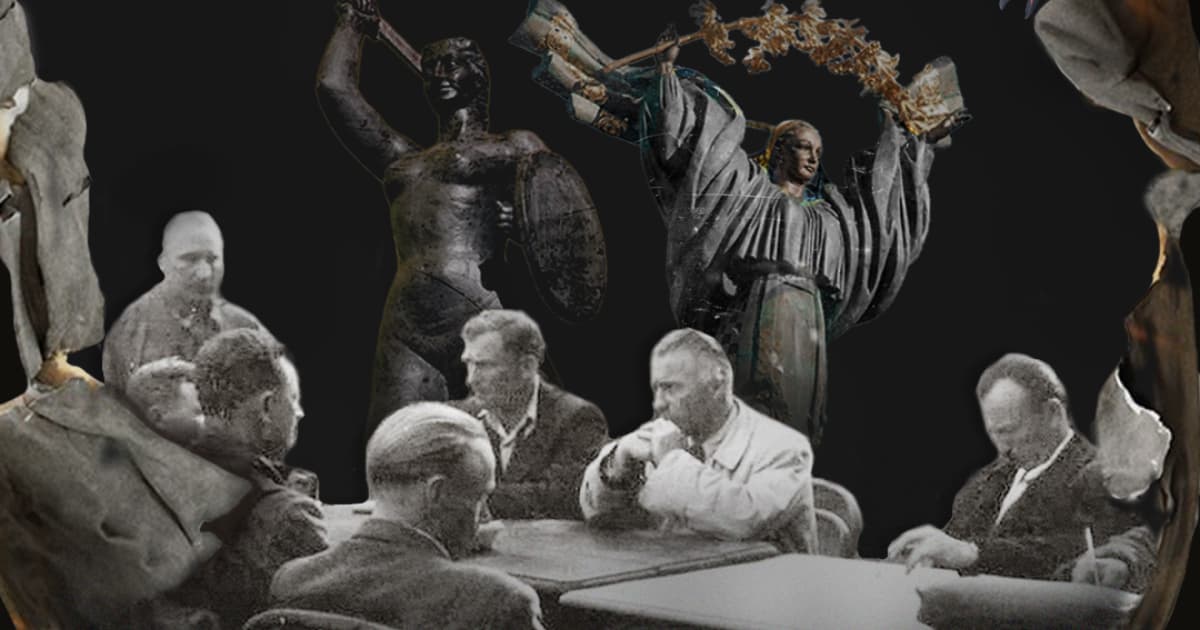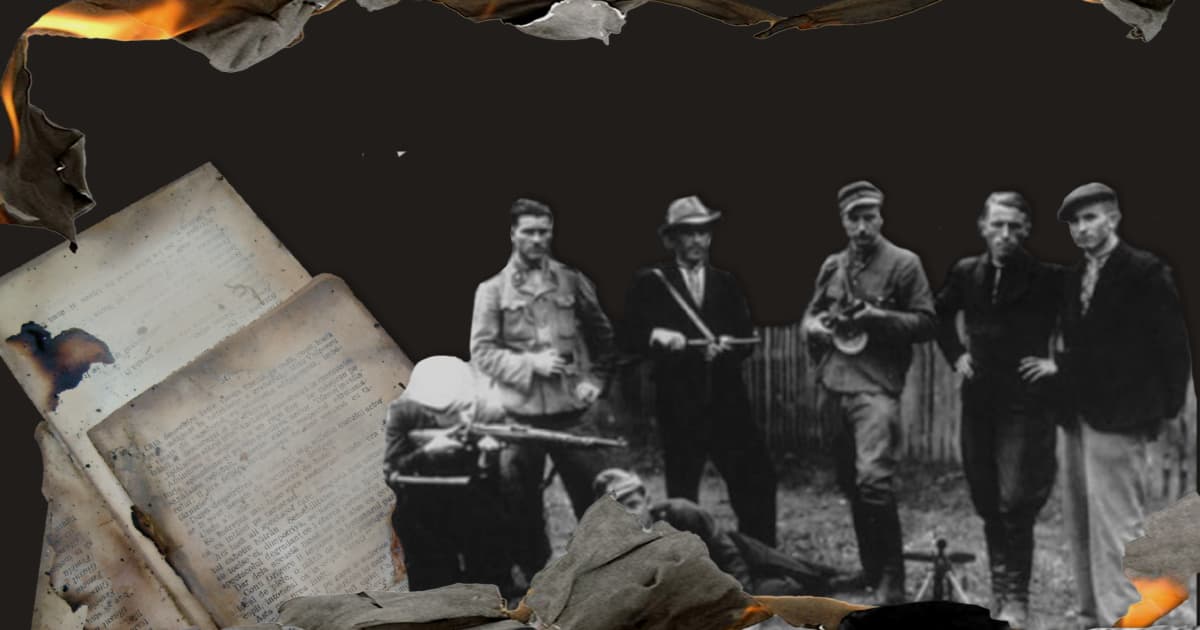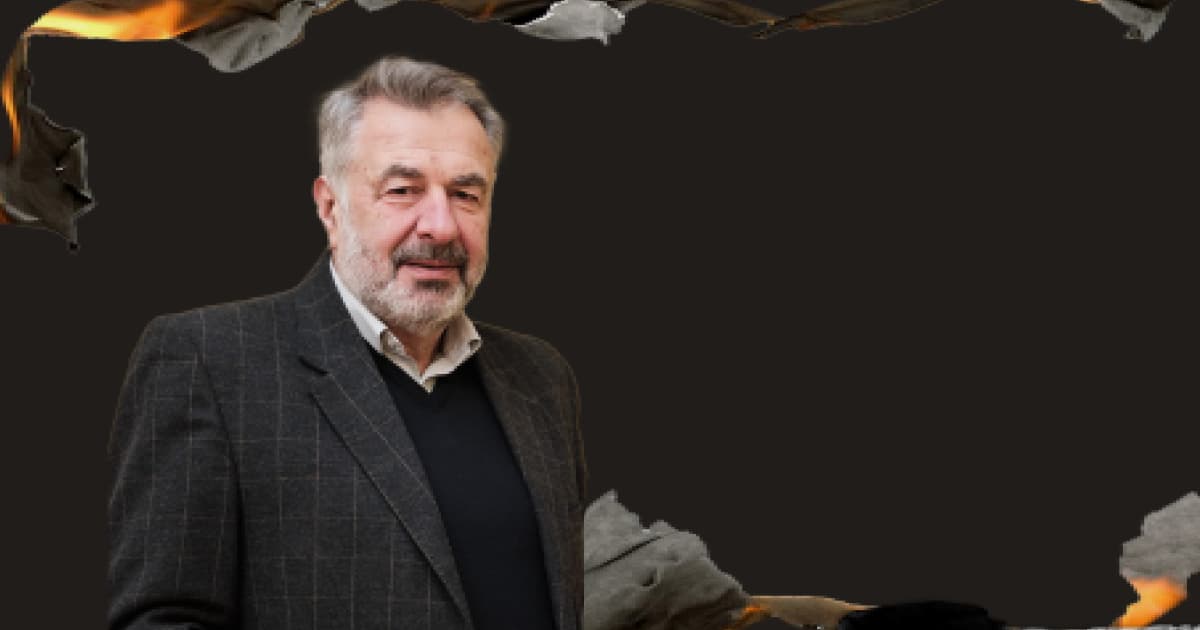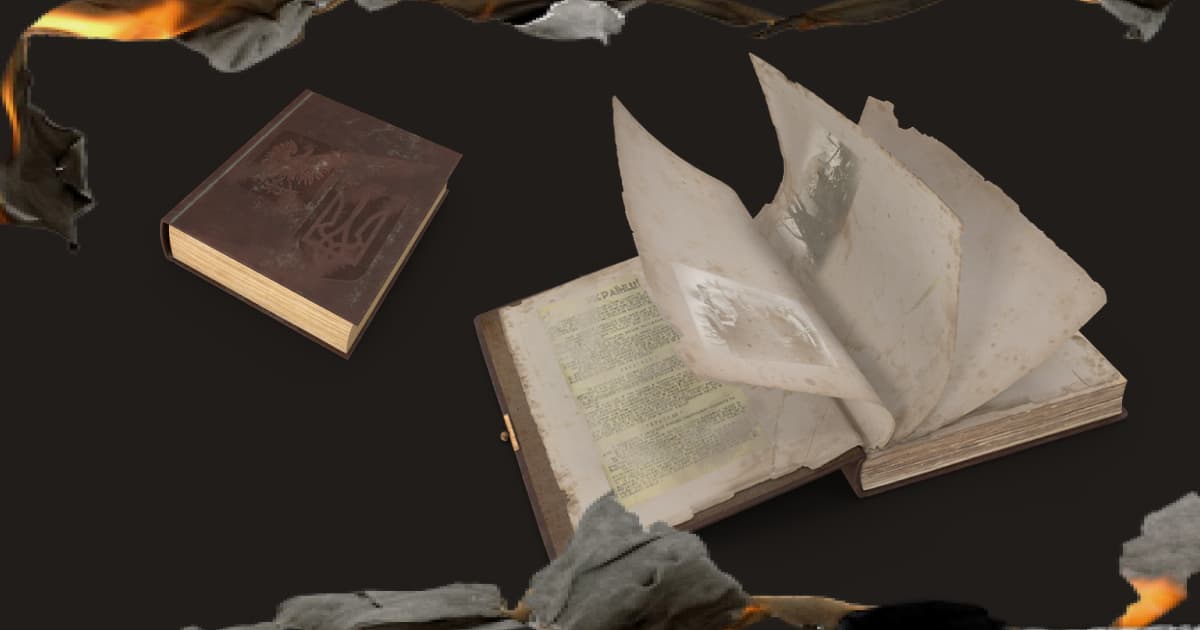The Volyn tragedy: how the events of 80 years ago affect Polish-Ukrainian relations

July 2023 marks the 80th anniversary of the Volyn tragedy — the massacres of Polish and Ukrainian civilians by the Ukraiinska Povstanska Armiia (Ukrainian Insurgent Army) on the one hand and the Krajowa Army (Home Army) on the other, as well as by Polish and Ukrainian civilians. The peak occurred on July 11, 1943, when about 200 Poles were killed in the village of Pavlivka, Volyn Oblast, in a local church.
Officially, Polish historiography calls these events the Volyn Massacre. In July 2016, the Polish Sejm adopted a resolution recognising the Volyn tragedy as genocide "committed by Ukrainian nationalists against Poles". At the same time, Ukrainian and Polish historians are debating the organisers' purpose, who was to blame and how many people died. Also, historians cannot agree on how to view the tragedy: as part of the complex of Polish-Ukrainian relations of the time or as a separate historical event.
Svidomi analysed the main approaches of Polish and Ukrainian historians and talked to Volodymyr Viatrovych, head of the Ukrainian Institute of National Remembrance in 2014-2019, about the impact of the Volyn tragedy on relations between Ukraine and Poland.
Different approaches
The issue of war crimes committed against the Polish population in Volyn provokes debate among politicians, the general public, and historians. They are mostly about specific details: who attacked Polish villages and how.
We will try categorising the available sources to make their understanding easier.
Polish traditionalists
Józef Turowski (1990 — hereinafter the year of publication in brackets) and Ewa and Władysław Siemaszko (1998) argued that the Organisation of Ukrainian Nationalists set itself the programmatic task of depolonising Volyn (depriving the Polish population of property rights and eliminating the influence of Polish culture in the region). They portray the interwar period as a peaceful coexistence between the two peoples.
For example, Ewa Semaszko quotes one of the witnesses interviewed: "I have memories of a peaceful and friendly life with our Ukrainian neighbours". This is why Polish traditionalists do not believe in the large-scale uncoordinated mobilisation of the Ukrainian population against the Poles. They are convinced that the blame for the killings lies with Ukrainian nationalists who deliberately fuelled hatred towards Poles.
This also influences their understanding of Polish "retaliatory" attacks on Ukrainian villages. Turowski claimed that the number of people killed in the Polish attacks did not exceed two thousand, so the ratio of Ukrainians to Poles could be 1:8. And if we believe the numbers cited by traditionalists, the ratio could be 1:18. For this reason, they tend to justify Polish crimes by saying that they were not directed against all Ukrainians, but against specific perpetrators.
Polish revisionists
Grzegorz Tożecki (1999) and Grzegorz Motyka (2011) are professional academic historians seeking to balance their research. Tożecki questions whether the Banderites planned the anti-Polish action in the way it happened.
Motyka, on the other hand, has no such doubts. He considers the actions of the Ukrainians to be "genocidal ethnic cleansing". This definition does not refer to the number of dead but only to the motives of the Ukrainians. Motyka questions the Ukrainians' motives: "killing Poles 'as such', or eliminating the threat of Volyn and other lands being included in the future Ukraine in their person."
At the same time, he rejects the thesis that these killings were more brutal than the actions of the German or Soviet occupiers. Motyka believes such comparisons are erroneous, as they lead to recognising other crimes as more "humane".
In addition, his approach differs from the traditionalists because he does not try to justify the "retaliatory" Polish attacks, some being genocidal, when the Poles killed all Ukrainians indiscriminately. But, in his opinion, it is impossible to put an equal sign between Polish and Ukrainian attacks because genocide concerns only certain actions of Polish partisans, not the entire campaign.
At the same time, he suggests that Operation Vistula, which deported the Ukrainian population, should be considered ethnocide, i.e. the destruction of a cultural group without the physical destruction of its members. Motyka condemns those Poles who try to justify the Vistula as a fight against Ukrainian nationalists.
Ukrainian traditionalists
Volodymyr Serhiichuk (2009), Volodymyr Viatrovych (2012, 2016) and Leonid Zalizniak (2016). What unites them is that they refuse to consider the events separately from the broader context of the Polish-Ukrainian confrontation.
They draw attention to the fact that the western Ukrainian territories became part of the Second Polish Republic due to the occupation of the Ukrainian People's Republic and the Western Ukrainian People's Republic.
The witnesses, especially the participants in the hostilities of 1918-1919, who were numerous in both societies, for the most part, did not perceive the rapprochement of these two peoples,
writes Viatrovych.
In the interwar period, Ukrainians were oppressed by the Polish state, although it promised to respect the rights of national communities. Zalizniak draws attention to the Polish siege campaign, under which the state allocated land to Poles, including war veterans, on Ukrainian territory. This increased revanchist feelings among Ukrainians.
Eventually, when the German army invaded Poland, the Polish military committed violence against the Ukrainian population.
For example, in the village of Ustie, Polish soldiers threw grenades into a school where women and children were hiding. In Naditychi, Vasyl Kundzerev's eyes were gouged out, and Hrytsko Kindiі's tongue was cut off,
Serhiіchuk writes.
For traditionalists, the events in the Kholm (Chełm) region, west of Volyn, which was part of the Polish-Lithuanian Commonwealth (the Kingdom of Poland and the Grand Duchy of Lithuania) until 1795 and became part of the Russian Empire after the destruction of the Polish state, also play a significant role. That is why the local Ukrainian population here was Orthodox, not Greek Catholic.
This region became a war zone during the First World War. In the summer of 1915, the Russian army retreated, forcing the locals to move east. As a result, the Catholic population of the region decreased by 25% and the Orthodox population by 92%. This dramatically changed the demographic situation. After the end of the First World War and the subsequent wars between Poland, the Western Ukrainian People's Republic and Soviet Russia, the Ukrainian population was in the minority. In 1921, Ukrainians comprised about 15% of the region's population.
In 1938, Polish troops destroyed 91 Orthodox churches to reduce this proportion further. After the end of World War II, the Kholm region became part of the Polish People's Republic. As a result of the deportation of local Ukrainians, first to the Ukrainian SSR and then to western Poland, Ukrainian communities almost disappeared.
Viatrovych calls the clashes in the Kholm region in 1941-1942 the beginning of the "second Polish-Ukrainian war" and draws attention to the fact that Polish partisans began attacking Ukrainian activists and Orthodox priests. The situation in the region was aggravated by the activities of communist partisan groups and the German decision to deport the Ukrainian and Polish populations to settle the territory with the Germans. The fact that armed bandit groups consisting of prisoners of war who escaped from German camps hid in the forests and were forced to use violence to get food did not help Polish-Ukrainian relations.
Viatrovych is convinced that the bandits, whom the local population called "axemen", played an important role in Volyn's initial stage of violence. He claims that the groups attacked villages for profit. After the war, their actions were attributed to Polish or Ukrainian political formations.
When it comes to assessments of these events, traditionalists disagree. Viatrovich calls the attacks on civilians war crimes but points out that they were committed by both Poles and Ukrainians.
Serhiichuk takes a more radical position, calling for no discussion of how the enslaved Ukrainian people sought to regain their statehood. And Zalizniak points out that although both Ukrainians and Poles committed crimes, "the main culprits in the bloodshed during the national liberation struggle of any nation are the occupiers." Ultimately, everyone rejects the concept of genocide because, in their view, it ignores the Polish attacks.
Ukrainian revisionists
Ihor Iliushyn (2003) and Yaroslav Hrytsak (2011) reject the thesis that Volyn's events should be considered part of a larger issue.
Neighbours can hate each other for a long time and mutually. But there must be a good reason for them to start killing each other,
says Hrytsak. He suggests that the reason was an order from the Ukrainian rebel leadership.
Iliushin does not deny previous episodes of violence but is sure that the Volyn events differed in the target of the armed actions ("Polish civilian villagers") and the discrepancy between the number of Polish and Ukrainian victims. He considers external factors, such as the presence of Soviet troops, to be of little influence.
Iliushin believes the confrontation was caused by "Polish and Ukrainian nationalism, that mutual extremism devaluing human life and justifying everything with patriotic slogans". He suggests that Ukrainian nationalists decided to attack Polish villages because they feared the Poles would be strengthened by their collaboration with the Nazis and Soviet partisans. In this way, the researcher denies the thesis that Polish attacks on Ukrainians in the Kholm region and Ukrainian attacks on Poles in Volyn are connected.
Hrytsak is far from shifting all responsibility to the Ukrainian insurgents. However, he calls for "putting the pieces together", unlike Viatrovych, who is convinced of the need to "agree to disagree" with the Poles on certain episodes of common history. The difference in approaches is key to understanding the debate.
The view of a Ukrainian historian
If you read the memoirs of eyewitnesses to the Volyn tragedy, in particular, "Machine Guns and Cherries" by Polish journalist Witold Szabłowski, you can trace a similar thought: "We lived together, visited each other, and then suddenly there were tensions and mass murders."

In a comment to Svidomi, Bohdan Hud, Doctor of Historical Sciences, Professor at the Ivan Franko National University of Lviv, explains that in Volyn, since the late 18th century, Russians have been conducting anti-Polish propaganda among Ukrainians, and the Russian Orthodox Church was influential in the region.
Another factor is the struggle for land as a resource. Unlike Ukrainian peasants, Poles owned a large amount of property. The Russian tsarist administration used this inequality in its propaganda. At the same time, there was no Ukrainian influence, as Russia banned any Ukrainian organisations.
One of the most influential organisations in Volyn was the Black Hundred (a collective name for Russian monarchist organisations — ed.), particularly the Union of the Russian People. About two million Volyn peasants joined the Black Hundred under the leadership of the Russian Orthodox Church. One of the reasons behind this was that the programme served the interests of the peasantry: to take land from the 'non-Christians' Poles and Jews and give it to Russian Christians,
the historian says.
After the Polish state gained a foothold in Volyn in 1921, local Polish officials reported to Warsaw that Volyn peasants did not want to be part of Poland. The older generation missed the tsar, while the younger preferred the Bolshevik regime. Twenty years of the interwar period were spent under communist influence. During this period, the Soviet Union inspired constant uprisings and anti-Polish protests. The influence of Ukrainian nationalists was virtually non-existent during this period.
Before the outbreak of war in 1941, Volyn was 'stuffed' with Bolshevik-Communist propaganda, which was later supplemented by nationalist propaganda. In Volyn, communist and nationalist propaganda were closely intertwined — the enemies were the Poles,
explains Bohdan Hud.
The situation of Ukrainians in the Polish state was not the best: to get a job or a public office, you had to become a Pole. According to Hud, it influenced the growth of hostility towards the Poles.
The mentality of a person changes during the war, and when it comes to survival, it becomes more acute. The participation of the peasantry makes any confrontation particularly bloody. The killings with axes and pitchforks were not a manifestation of the particular cruelty of the Volyn peasants. Similar things happened everywhere. In 1846, in western Galicia, during Jakub Szel's uprising, landlords were put between two logs and cut in half with a saw. And during the Iberian War, Spanish peasants skinned French soldiers who were captured,
the historian explains.
The responsibility for the Volyn tragedy cannot be placed on anyone alone, says Hud. There are several factors: communist and nationalist influences, Soviet partisan activities, infiltration of the Ukrainian Insurgent Army by Soviet agents, the actions of various gangs and the German occupation administration.
The discrepancy between Polish and Ukrainian studies shows that the Volyn events require in-depth and resident research based on mutual concessions and understanding, the historian is convinced.
The research I'm doing shows that both sides are to blame. Polish historical documents show that the actions of Polish units are no different from the horrors committed by Ukrainian ones. They used the same methods of fighting against Ukrainians as Ukrainians used against Poles. This negates the claim that the Poles were a one-sided victim,
he says.
Relations with Poland are valuable for Ukraine, so the events in Volyn deserve a harsh condemnation, says Hud.
We must make it clear that we do not approve of these events. Ukrainians glorify the Ukrainian Insurgent Army not because they killed Poles but because they fought against the Soviets and Russia. Similarly, Bandera is glorified not because he killed Poles but because he was a symbol of the Ukrainian national liberation movement. We must repeat this,
emphasises Hud.

The Politics of Memory
In 2016, the Polish Sejm recognised the events in Volyn as genocide of the Polish people. A heated political and public debate preceded this. The discussion resulted in multiple anti-Ukrainian actions in Poland, including destroying Ukrainian monuments. In 2014-2017, 15 monuments to the Ukrainian Insurgent Army were demolished in Poland.
Polish law enforcement agencies and the Institute of National Remembrance did not react. This became one of the key factors in the deterioration of relations between modern Ukraine and Poland. Volodymyr Viatrovych participated in these events as a historian and the head of the Ukrainian Institute of National Remembrance.
"The Polish Institute of National Remembrance dissociated itself, but there were cases when it openly supported this. The dismantling of a monument on the graves of Ukrainian Insurgent Army representatives near Przemyśl was broadcast live with a cover letter from the Polish Institute of National Remembrance stating that the monument was "illegal". It could therefore be dismantled (this refers to the dismantling of a monument at a cemetery in the village of Hruszowice in 2017). Members of Polish nationalist organisations carried out the dismantling of local authorities — ed.).
It was brutal: the monument, including the trident, was destroyed on camera. The local village head was happy that the remains of the memorial were ground up and used to lay asphalt in the village," Volodymyr Viatrovych said in a comment to Svidomi.
Such actions by the Polish side prompted the Ukrainian Institute of National Remembrance to suspend the process of legalising Polish memorial sites in Ukraine. After that, there was no new destruction of Ukrainian memorials. However, law enforcement agencies did not investigate the previous cases.
The Ukrainian side also imposed a moratorium on the search for Polish graves on the territory of Ukraine. In Poland, this was interpreted as a ban on exhumation work. In this way, Ukraine wanted to draw attention to the inadmissibility of destroying Ukrainian graves in Poland.
"I remember in 2018, an information trick that was done by the Polish authorities, when Andrzej Duda came to Volyn and put flowers in a field with a sign saying that there might be Polish graves somewhere, even though there are many cemeteries, monuments, and real graves of victims of the Polish-Ukrainian conflict in Ukraine. There are a lot of manipulations in this matter, which, in my opinion, indicate that there is no desire to solve the problem," says Viatrovych.
He says that Ukraine set a condition for Poland to restore the Ukrainian monument on Monastyr Mountain, which was destroyed twice. It is a tombstone that lists the names of 62 UPA soldiers who died during a battle with NKVD (People's Commissariat of Internal Affairs) in March 1945.
"The monument restoration was a prerequisite for the Polish side to be granted permission for search and exhumation work. Poland insisted that they had already restored the monument. Ukrainians living there showed that they had put up a memorial plaque with a different inscription: "The mass grave of Ukrainians who died in the battle with the Soviet NKVD in the Monastyr Woods on the night of March 2 to 3, 1945", and the names of the people buried there had disappeared. The Ukrainian side recognised the falsification, not the restoration," says Viatrovych.
Reconciliation and the political context
On July 12, 2002, Presidents Leonid Kuchma and Aleksander Kwaśniewski jointly unveiled the monument to Ukrainian-Polish reconciliation, "Memory — Grief — Unity", in the village of Pavlivtsi in Volyn. In the same year, the parliaments adopted a statement on the 60th anniversary, declaring that the events in Volyn were a tragedy for both nations.
In 2006, subsequent presidents Kaczyński and Viktor Yushchenko unveiled a memorial to the Ukrainians who died at the hands of the Polish Home Army in March 1945. In 2016, Petro Poroshenko knelt before the monument to the victims of Volyn on the eve of the anniversary.
"Nobody knows what other political gestures should be made by the Ukrainian side. On the Polish side, it appears that apologies are not enough. The Polish side hints that the Ukrainian Insurgent Army should be condemned. It is unacceptable, given that the Ukrainian Insurgent Army is an integral element of the struggle for the Ukrainian state and independence. It is an important element in the context of the current war with Russia. It is one of those episodes of history that inspires today's Ukrainians to defend their independence. Therefore, any statements that we should disassociate ourselves from the struggle of Ukrainian insurgents will not be accepted by Ukrainian society," the historian says.
According to Viatrovych, Ukrainian and Polish politicians' thesis "We forgive and ask for forgiveness" in the 1990s and early 2000s is sufficient to reach historical reconciliation.
The issue of the Volyn tragedy in today's relations between Ukraine and Poland
After the start of the full-scale invasion, Poland's political leadership changed its approach somewhat. President Andrzej Duda described it as "not a policy of running around with a pitchfork, but a policy of calmly seeking understanding in historically complex issues."
On July 11, 2022, commemorative events occurred in Warsaw, not Ukraine. The Polish leadership decided going to Volyn in 2022 would be disrespectful.
Instead, on July 7, 2023, Prime Minister Mateusz Morawiecki visited Volyn to pay his respects. And on July 9, President Duda arrived in Lutsk with Volodymyr Zelenskyy for the same purpose. "Memory unites us! We are stronger together!" he said. The Prawo i Sprawiedliwość (Law and Justice) party cannot completely abandon this topic. Although it is located on the right wing of the political spectrum, there are plenty of political forces to their right that oppose supporting Ukraine until Kyiv recognises the attacks on Polish villages as genocide.
Nevertheless, PiS is willing to compromise. Throughout 2022, rumours circulated that Warsaw was ready to turn a blind eye to the glorification of Bandera, provided that the figure of Roman Shukhevych received less public attention. It is a big step — Bandera was directly involved in the assassination of Polish Interior Minister Bronisław Pieracki.
Poland is taking this step because it hopes that the heroes of the Russian-Ukrainian war will replace members of the Organisation of Ukrainian Nationalists and Ukrainian Insurgent Army fighters in the pantheon. In addition, Duda says that Ukraine's current political leaders understand Polish needs better than previous ones.
As for the Ukrainian position, less is known about it. In 2022, Ukraine's new ambassador to Poland, Vasyl Zvarych, participated in commemorative events. The embassy issued a statement saying that it honoured all victims, not just Polish ones. However, this happened before Zvarych handed over his credentials to Duda, so technically, he was not an ambassador then.
Ukrainian parliamentary speaker Ruslan Stefanchuk repeated the same formula in a speech to the Polish Sejm in May 2023. But simultaneously, he announced: Ukraine and Poland must jointly accept the truth, no matter how painful it may be.
Svidomi sent inquiries to the Embassy of Ukraine in Poland and the Polish mission in Kyiv and also invited Professor Grzegorz Hryciuk, who studies Ukrainian-Polish relations, to present his vision. At the time of publication, we had not received any responses. The editors are ready to publish the Polish position.
Duda hopes that Ukraine and Poland will soon solve the problem. Then this issue will cease to be a subject of political disputes.
Historians can and will argue with each other, bringing us closer to understanding what happened. But this issue must stop being merely political because it does not bring anything useful to modern politics. Politicians should realise that the Polish-Ukrainian conflict of the 1940s was exploited by a third party (the Soviet Union - ed.). Mutual killings of Ukrainians and Poles eventually led to the fact that both Ukrainians and Poles lost their freedom (Ukraine and Poland were under Moscow's control until the collapse of the USSR - ed.),
said Viatrovych.



